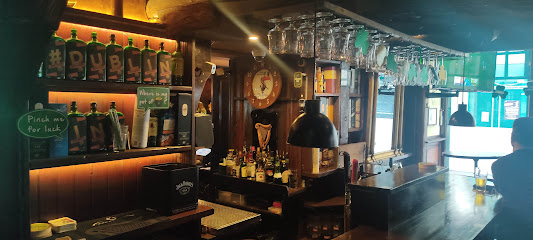
Ernst-August-Platz: Gateway to Hannover
Experience the vibrant heart of Hannover at Ernst-August-Platz, a historic square connecting travelers to the city's rich culture, major attractions, and bustling commercial center.
Ernst-August-Platz, a bustling square in Hanover, Germany, serves as the primary entrance to the city for many visitors arriving by train. Named after King Ernst August I of Hanover, the square is dominated by a prominent equestrian statue of the monarch, a popular meeting point known locally as 'under the tail.' Flanked by the Hannover Hauptbahnhof (central train station) and a mix of commercial buildings, the square functions as a transport hub and a vibrant public space. While its original design featured more green spaces, today it's largely a pedestrian zone accommodating bus traffic, offering easy access to the city center, shopping at Ernst-August Galerie, and connections to key attractions. The square embodies a blend of historical significance and modern urban life, making it a key landmark in Hannover.
A brief summary to Ernst-August-Platz 8
- Ernst-August-Platz 8, Hanover, Hanover-Mitte, 30159, DE
Local tips
- Look for the 'under the tail' meeting point at the equestrian statue of King Ernst August I, a popular and humorous local reference.
- Explore the underground Niki-de-Saint-Phalle-Promenade for shopping and a unique pedestrian experience.
- Take advantage of the square's central location to easily access the Hannover Hauptbahnhof and connect to other parts of the city and region.
Getting There
-
Public Transport
Ernst-August-Platz is directly in front of Hannover Hauptbahnhof, the central train station. Upon exiting the station's main entrance, you'll find yourself on the square. Numerous tram and bus lines also serve the square. Check local transit maps for the most up-to-date routes and schedules. A single ticket within Hanover (Zone A) costs €3.60 and is valid for two hours. A short trip ticket, valid for five bus stops or three tram stops, costs €1.80.
-
Walking
From most locations in Hannover city center, Ernst-August-Platz is easily accessible on foot. Use the Hauptbahnhof (central train station) as your primary landmark. The square is directly in front of the station's main entrance. Follow signs directing you towards the Hauptbahnhof. Walking from Kröpcke, a central square, takes approximately 5-10 minutes.
-
Taxi/Ride-Share
Taxis and ride-sharing services are readily available throughout Hannover. Simply request a ride to 'Ernst-August-Platz' or 'Hannover Hauptbahnhof'. Be aware that traffic around the Hauptbahnhof can be congested, especially during peak hours. A short taxi ride from Kröpcke to Ernst-August-Platz will typically cost between €8-€12.
-
Driving
If driving, navigate to 'Ernst-August-Platz 8, 30159 Hannover'. Parking near Ernst-August-Platz is available in several parking garages, including those at the Ernst-August Galerie and the Hauptbahnhof. Parking fees typically range from €2.50 per hour. Open-air parking options are also available on Fernroder Straße and Kurt-Schumacher-Straße, but these can fill up quickly. Consider using a parking app to find real-time availability and pricing.
Discover more about Ernst-August-Platz 8
Iconic landmarks you can’t miss
Ernst-August-Platz 8
0.0 km
Experience the vibrant heart of Hannover at Ernst-August-Platz, a historic square connecting travelers to the city's rich culture, major attractions, and bustling commercial center.
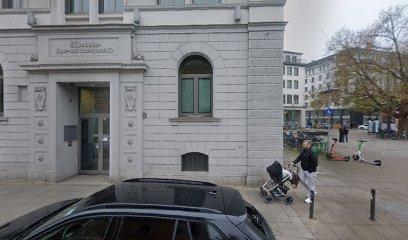
Drachentöterhaus
0.4 km
Explore Drachentöterhaus in Hanover, a historical landmark that enchants visitors with its rich history and captivating architecture.
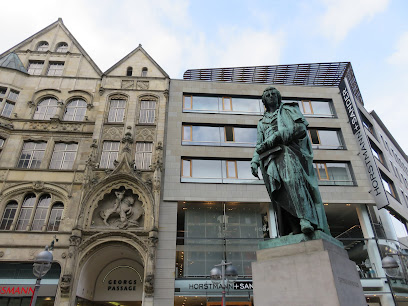
Friedrich Schiller
0.4 km
Discover the Friedrich Schiller Monument in Hanover, a cultural gem honoring the great German playwright amidst beautiful gardens.
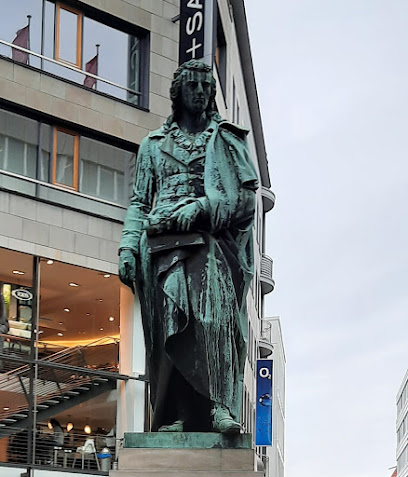
Bogside '69 - Skulptur
0.5 km
A powerful sculpture in Hanover commemorating the Bogside events of 1969 in Northern Ireland, connecting human rights, political violence, and the need for peace and understanding.
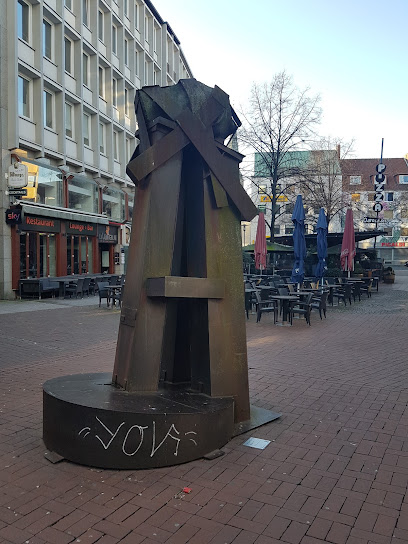
ATRIUM Altes Rathaus Hannover
0.6 km
Dine in the heart of Hanover's history at ATRIUM Altes Rathaus, where culinary excellence meets architectural grandeur in the city's oldest secular building, offering a unique and memorable experience.
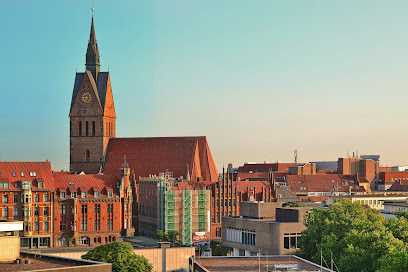
Open Grave, Hanover
0.6 km
Discover a peaceful oasis in Hanover's heart at Gartenfriedhof, a historic cemetery with notable graves, classic monuments, and the intriguing 'Open Grave'.
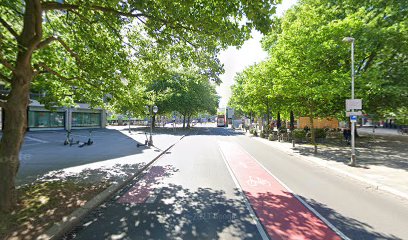
Broyhan Haus
0.6 km
Discover the authentic taste of Germany at Broyhan Haus, where every meal is a celebration of tradition and flavor in the heart of Hanover.
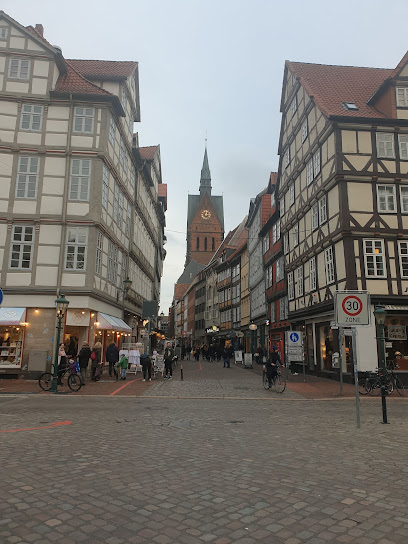
Kreuzkirche
0.6 km
Discover Hannover's oldest parish church, the Kreuzkirche, a blend of Gothic and Baroque architecture housing historical treasures and hosting vibrant cultural events in the heart of the Old Town.

Anzeiger-Hochhaus
0.7 km
Discover Hanover's iconic Anzeiger-Hochhaus, a Brick Expressionism masterpiece with a rich media history and the highest cinema in Germany, offering a unique cultural experience.
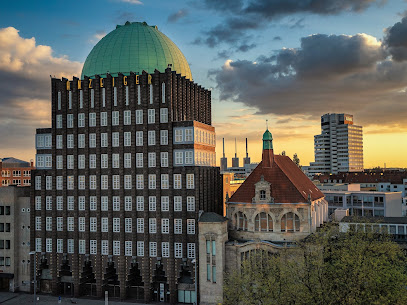
Ballhofpl. 1
0.7 km
Discover Hanover's historic heart at Ballhofplatz, a charming square with a rich past, vibrant cultural scene, and picturesque half-timbered buildings, offering a delightful experience for every traveler.
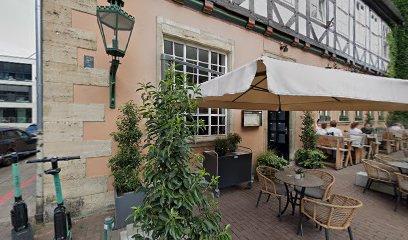
Laveshaus
0.8 km
Explore Laveshaus, an architectural masterpiece in Hanover, where history and beauty meet in stunning harmony.
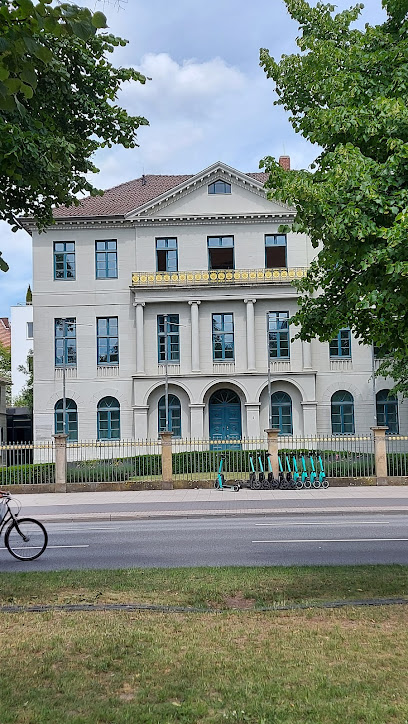
Göttingen Seven Monument
0.8 km
Explore the Göttingen Seven Monument in Hanover, a historic landmark celebrating the legacy of academic freedom and courage.
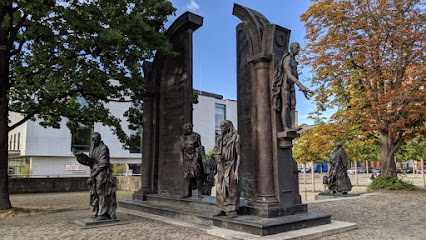
Leineschloss
0.8 km
Explore Hannover's Leineschloss: A historic palace turned parliament, blending centuries of royalty and political power in the heart of the city.

Clevertorbrücke
1.0 km
Explore Clevertorbrücke in Hanover, where stunning architecture meets vibrant culture and picturesque views, perfect for every tourist's itinerary.

Abendmahl
1.0 km
Explore Abendmahl, a serene tourist attraction in Hanover, where history, culture, and tranquility converge for an unforgettable experience.
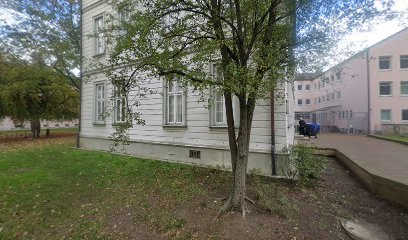
Unmissable attractions to see
Brunnen, Hannover
0.0 km
Explore the enchanting Brunnen in Hannover, a historical fountain surrounded by beautiful gardens, perfect for relaxation and cultural appreciation.
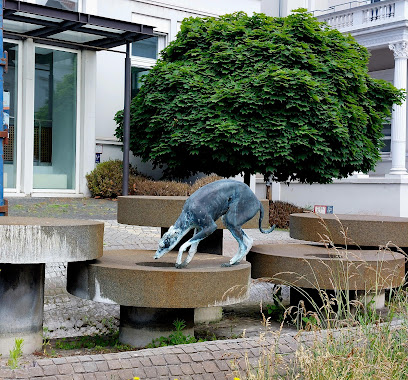
Ernst-August-Platz
0.1 km
Discover the vibrant atmosphere of Ernst-August-Platz in Hanover, a lively town square surrounded by shops, culture, and rich history.

Hannover zum Fühlen, Sehen und Begreifen
0.1 km
Experience the vibrant culture and rich history of Hannover at Hannover zum Fühlen, Sehen und Begreifen, a must-visit tourist attraction in Germany.
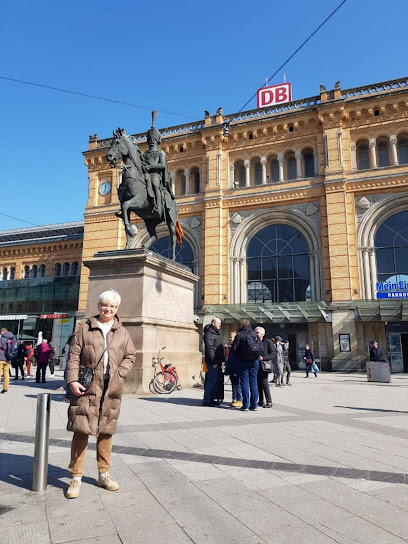
Ernst August
0.1 km
Explore the vibrant Ernst August-Platz in Hannover, a cultural landmark where history meets modern life, surrounded by shops, cafes, and stunning architecture.
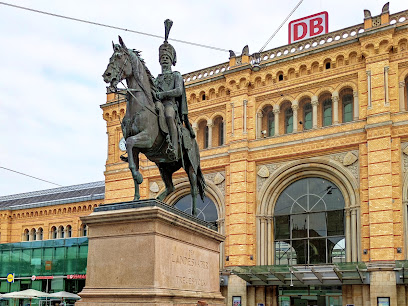
HAZ-Brunnen, Hannover - HAZ (2000)
0.1 km
Discover the beauty of HAZ-Brunnen in Hanover, a stunning fountain and lively gathering spot perfect for relaxation and socializing.
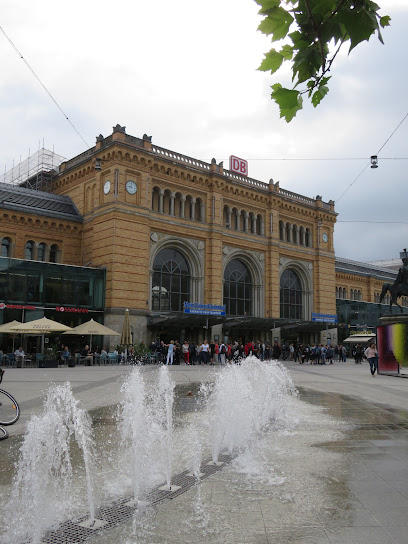
Blinden Stadtmodell Innenstadt Hannover
0.2 km
Discover Hannover's landmarks in a unique tactile experience at the Blinden Stadtmodell, perfect for all tourists looking to explore the city inclusively.
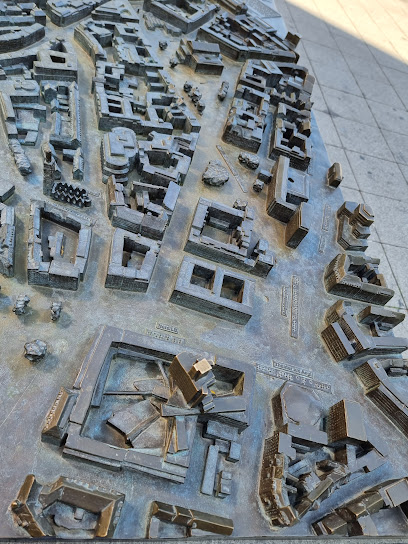
Kröpcke Clock
0.2 km
Explore the historic Kröpcke Clock in Hanover, a stunning landmark surrounded by vibrant shops and cafés, perfect for relaxation and cultural immersion.
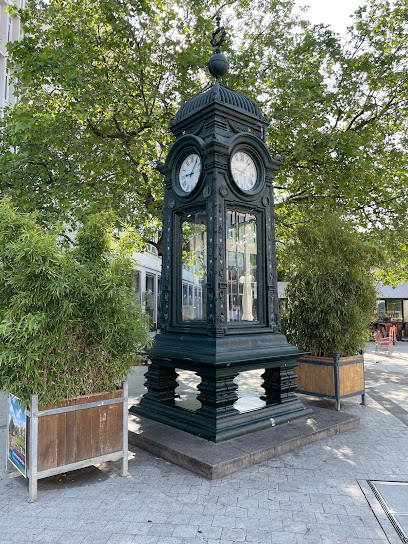
State Opera of Hannover
0.2 km
Discover the artistic splendor of the State Opera of Hannover, a cultural landmark offering world-class performances in a stunning architectural setting.
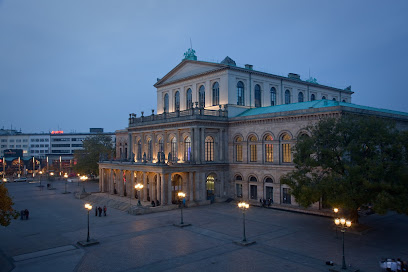
Twitter Cultural Site (Platform 11)
0.2 km
Discover the vibrant intersection of technology and culture at Hannover's Twitter Cultural Site, Platform 11, a must-visit for modern travelers.

Postbrunnen, Hannover - Herbert Volwahsen (1957)
0.3 km
Discover the artistic essence of Postbrunnen in Hannover, a stunning fountain by Herbert Volwahsen that captivates visitors with its beauty and cultural significance.
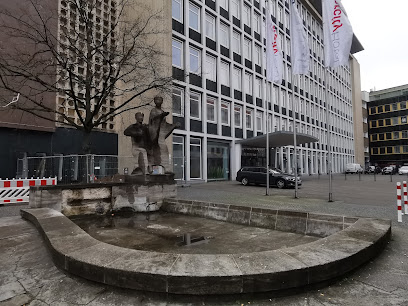
GOP Varieté-Theater Hannover
0.3 km
Experience the magic of performing arts and fine dining at GOP Varieté-Theater Hannover, a cultural gem in the heart of Hanover.
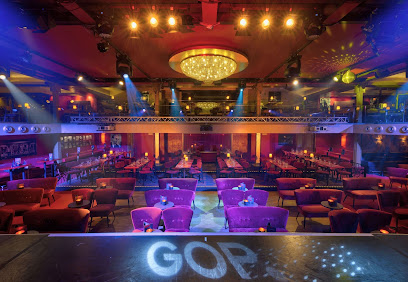
" Mann mit Hirsch "
0.3 km
Discover the enchanting Mann mit Hirsch statue in Hanover, a blend of art and history in a charming urban setting.

Memorial to the murdered Jews of Hanover
0.3 km
Explore the Memorial to the Murdered Jews of Hanover, a poignant cultural landmark dedicated to remembering the victims of the Holocaust.
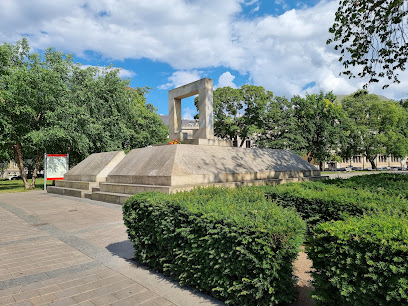
Oettingerwiese
0.3 km
Discover Oettingerwiese, Hannover's green gem, where urban tranquility meets vibrant community spirit in the heart of the city.
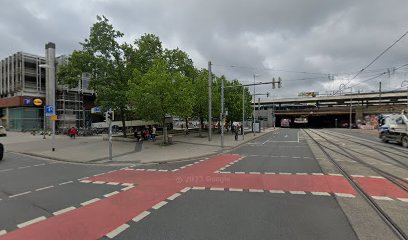
Fountain Of Leaves
0.3 km
Discover the serene beauty of the Fountain of Leaves in Hanover, a tranquil oasis perfect for relaxation and picturesque memories.
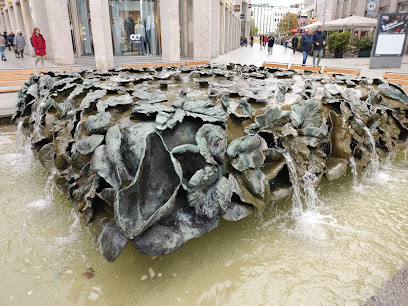
Essential places to dine
Restaurant Titus im Röhrbein
0.1 km
Experience exquisite European cuisine at Restaurant Titus im Röhrbein in Hanover - where seasonal flavors meet modern elegance.
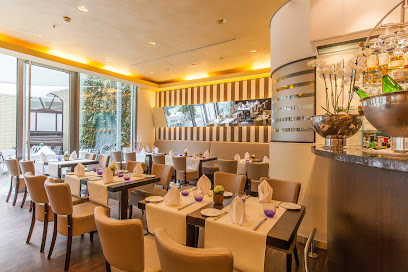
MARY´s Restaurant
0.1 km
Experience fine dining at MARY's Restaurant in Hanover—where culinary excellence meets sophisticated ambiance.
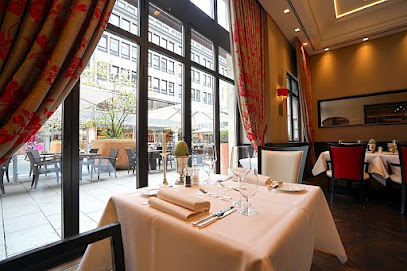
Restaurant Brunnenhof
0.2 km
Savor authentic German flavors at Restaurant Brunnenhof in Hanover - a cozy haven for food lovers seeking traditional cuisine.

Gondel Restaurant & Bar im Georgspalast
0.3 km
Experience traditional German cuisine with a modern twist at Gondel Restaurant & Bar in Hanover's historic Georgspalast.
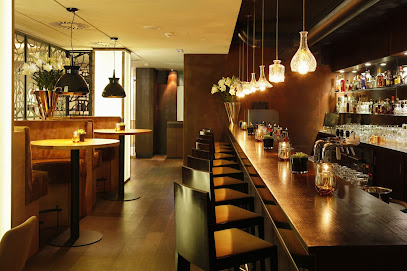
BLOCK HOUSE Am Kröpcke
0.3 km
Experience exquisite steaks and welcoming ambiance at BLOCK HOUSE Am Kröpcke - the ultimate dining destination in Hannover.
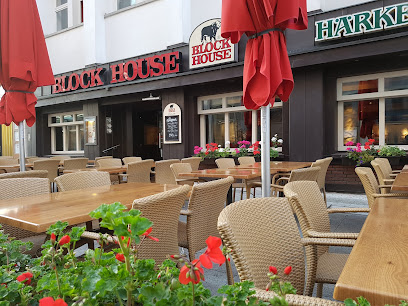
Leinegold Restaurant Wein Bar
0.4 km
Experience the best of German cuisine at Leinegold Restaurant Wein Bar in Hanover, where tradition meets sophistication.
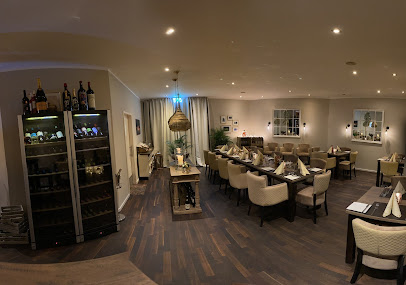
Al-dar
0.4 km
Experience authentic Syrian cuisine at Al-dar in Hanover, where every dish tells a story of rich flavors and traditions.
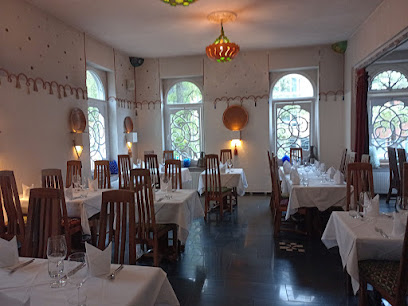
Ristorante Weinstube Leonardo
0.4 km
Discover authentic Italian flavors at Ristorante Weinstube Leonardo in Hanover – where every meal is a delightful culinary journey.
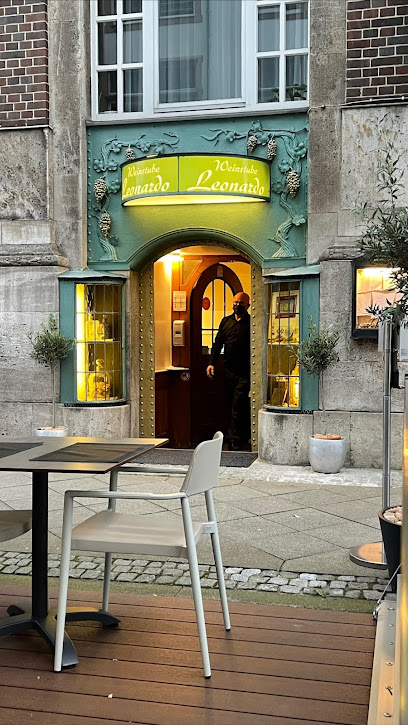
Bavarium Hannover
0.4 km
Experience authentic German cuisine and lively beer garden vibes at Bavarium Hannover - a culinary delight in the heart of Hanover.
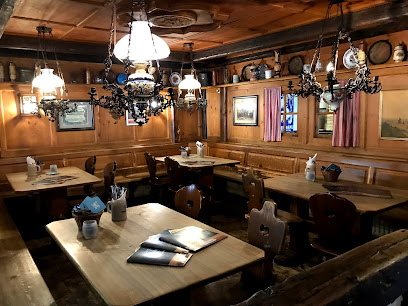
Albertz.
0.4 km
Experience exquisite dining at Albertz in Hanover - where local flavors meet international cuisine in an inviting atmosphere.
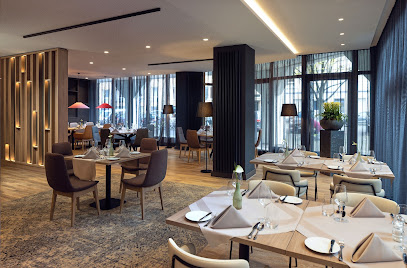
6 Sinne Sky Bar and Restaurant
0.4 km
Discover exquisite dining with panoramic views at 6 Sinne Sky Bar and Restaurant in Hanover – where culinary artistry meets stunning skyline vistas.
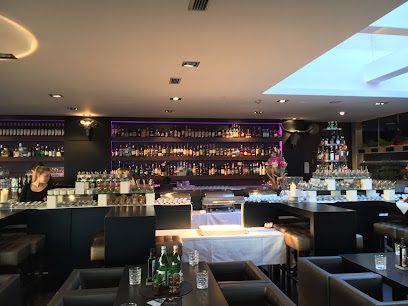
Restaurant Grüpchen
0.5 km
Discover the rich flavors of Hanover at Restaurant Grüpchen - where local meets international cuisine in a cozy setting.
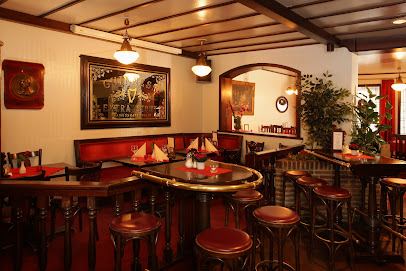
Restaurant & Weinbar Enrico Leone
0.5 km
Experience authentic German cuisine and exquisite wines at Restaurant & Weinbar Enrico Leone in the heart of Hanover.
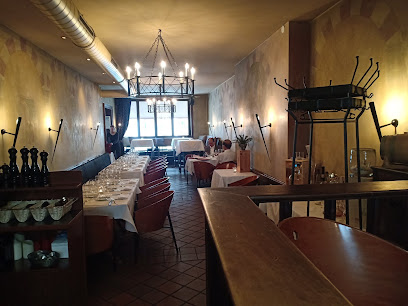
DIE SCHMIEDE Hannover
0.5 km
Discover DIE SCHMIEDE Hannover – where traditional German cuisine meets vibrant social atmosphere in the heart of Hanover.
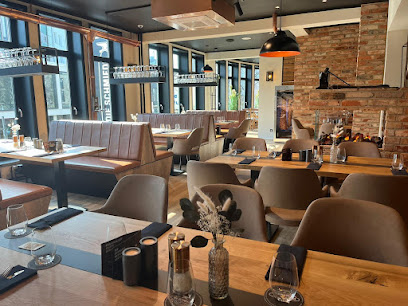
KUHnstWERK
0.6 km
Experience gourmet burgers at KUHnstWERK in Hannover – where taste meets creativity in every bite.
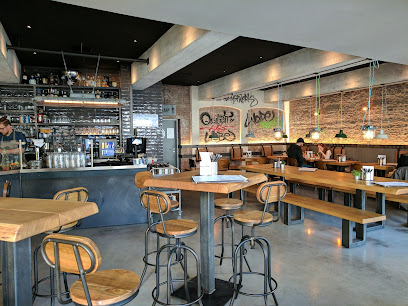
Markets, malls and hidden boutiques
Hannover.made
0.0 km
Explore the culinary delights of Hanover at Hannover.made, a vibrant grocery store offering local produce and gourmet specialties.
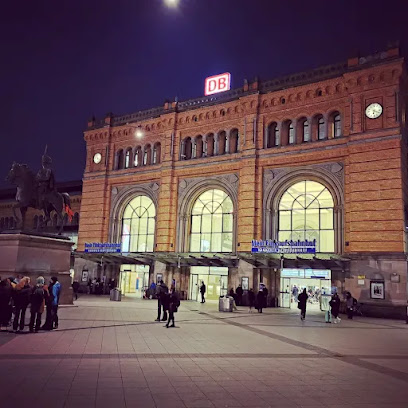
Galerie Luise
0.1 km
Discover the vibrant shopping experience at Galerie Luise in Hanover, where local charm meets international flair in a beautiful setting.
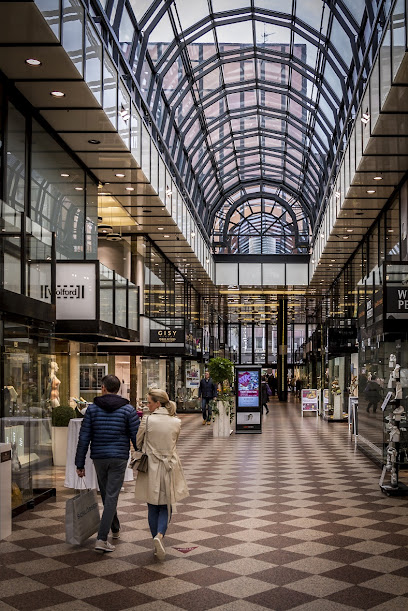
Store
0.1 km
Explore the elegance of Hugo Boss in Hanover, where modern fashion meets timeless sophistication in a premier shopping experience.
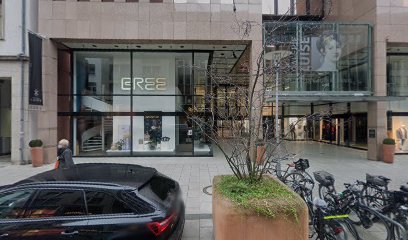
Mont Blanc Hanover - Kröpckepassage
0.1 km
Explore Mont Blanc Hanover for exquisite jewelry, premium leather goods, and luxury writing instruments in the heart of the city.

Niki-de-Saint-Phalle-Promenade
0.1 km
Experience the artistic charm and vibrant shopping atmosphere of Niki-de-Saint-Phalle-Promenade, a true gem in Hanover's cultural landscape.
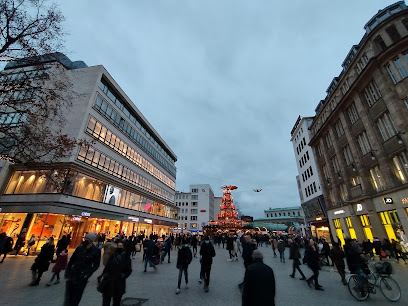
Leonardo Store Hanover
0.1 km
Explore the Leonardo Store in Hanover for unique gifts, exquisite jewelry, and handcrafted glassware, perfect for any traveler.
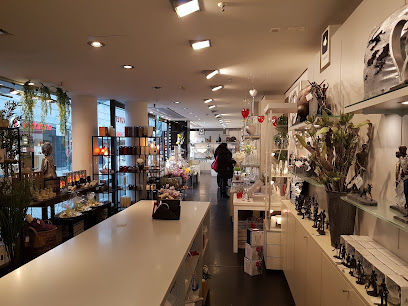
Luxussachen.com - Filiale Hannover
0.1 km
Explore Luxussachen.com in Hannover for vintage fashion and unique accessories that embody sustainability and timeless style.
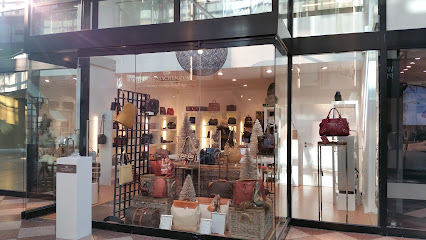
Kröpcke Passage
0.1 km
Explore Kröpcke Passage, Hannover's vibrant shopping mall, blending retail, dining, and local culture in a central location.
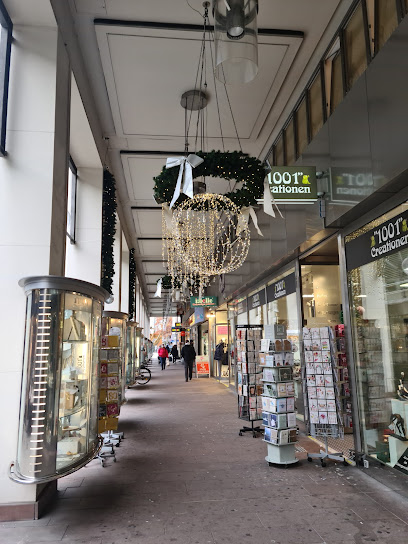
Fantasy
0.2 km
Discover the enchanting realm of Fantasy, a unique gift shop and game store in Hanover, perfect for finding whimsical treasures and exciting board games.
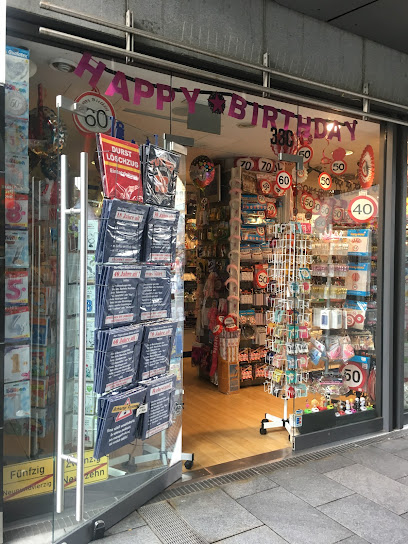
GALERIA Hannover
0.2 km
Explore GALERIA Hannover, a premier department store offering a unique shopping experience with local and international brands in the heart of the city.
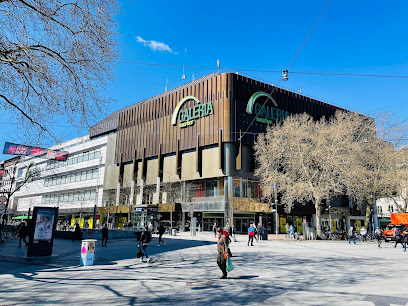
Einkaufsbahnhof Hannover Hbf
0.2 km
Discover the vibrant Einkaufsbahnhof Hannover Hbf, a unique shopping mall blending convenience, culture, and culinary delights in the heart of Hannover.

Manufactum Warenhaus
0.3 km
Explore the charm of Hannover at Manufactum Warenhaus, where quality and craftsmanship come together in a delightful shopping experience.
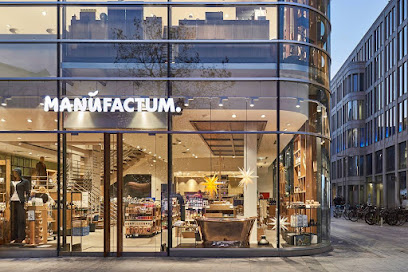
WERKHAUS GmbH Shop Flagship-Store
0.3 km
Explore WERKHAUS GmbH Flagship-Store in Hanover for unique gifts and innovative designs that embody creativity and sustainability.
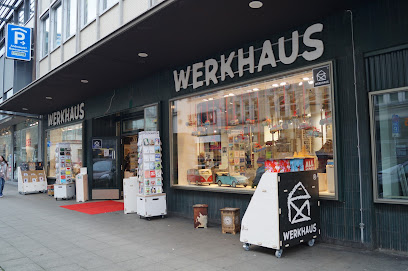
AUST Fashion Hannover - Kröpcke Center
0.3 km
Discover unique styles at AUST Fashion Hannover, located in the vibrant Kröpcke Center, where contemporary fashion meets local charm.
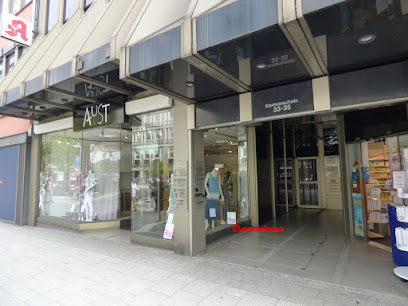
Blue House
0.3 km
Explore the Blue House in Hanover, where quality men's fashion meets modern style for the discerning traveler.
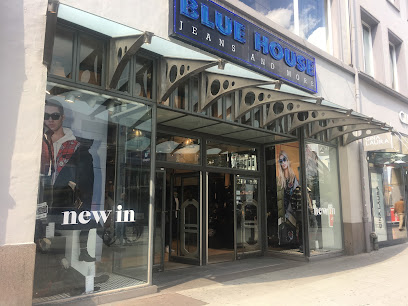
Essential bars & hidden hideouts
Leos Bar
0.1 km
Discover the lively atmosphere and exquisite drinks at Leos Bar, the heart of Hanover's nightlife. Perfect for unwinding or enjoying a night out.
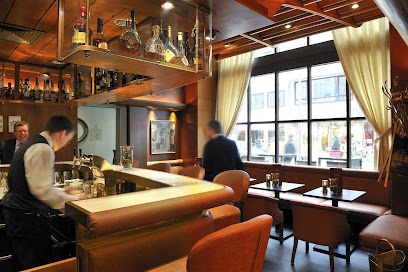
Sternwarte - Hannover
0.2 km
Explore the cosmos at Sternwarte - Hannover, where stargazing meets the perfect nightlife experience in the heart of the city.
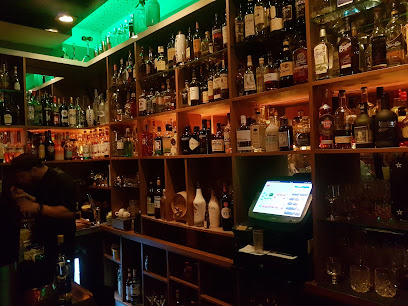
mini Bar Hannover
0.2 km
Experience the vibrant cocktail culture at mini Bar Hannover, where innovative mixology and a cozy atmosphere await every visitor.
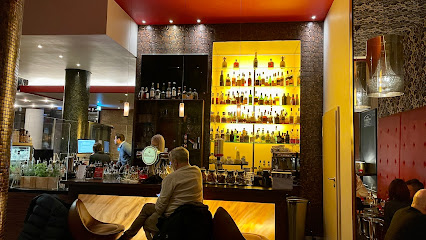
My Way Cocktailbar
0.3 km
Discover My Way Cocktailbar: Hanover's Hotspot for Creative Cocktails and Lively Atmosphere.
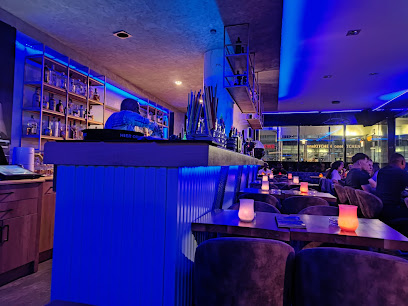
Hangover Cocktailbar
0.4 km
Discover the vibrant ambiance and innovative cocktails at Hangover Cocktailbar, Hanover's go-to nightlife destination for an unforgettable evening.
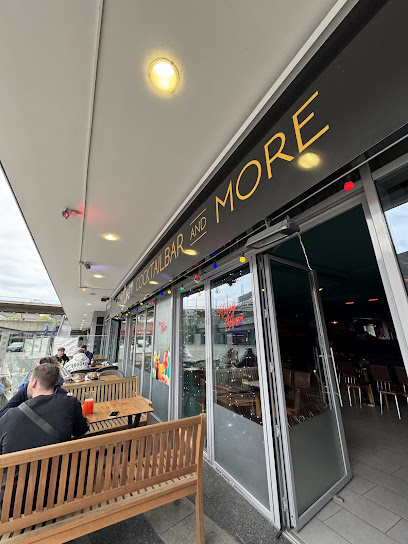
Roof Garden Hannover
0.4 km
Discover the vibrant Roof Garden Hannover, a rooftop cocktail bar offering stunning views, exquisite drinks, and an unforgettable atmosphere in the heart of the city.
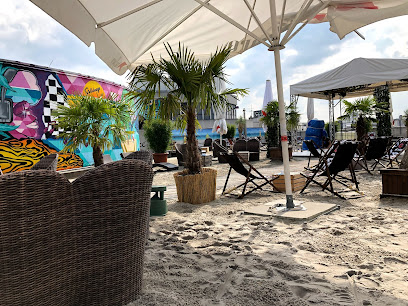
Oscar's Bar - Hannover
0.4 km
Discover the lively atmosphere of Oscar's Bar in Hannover, where exceptional cocktails meet a welcoming pub experience for all visitors.
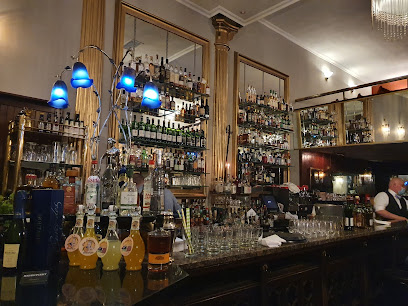
Bukowski's
0.5 km
Discover the chic ambiance and exquisite drink selection at Bukowski's, Hannover's premier bar for a memorable night out.
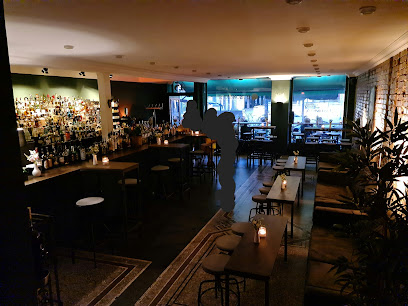
SAUSALITOS
0.5 km
Experience the vibrant blend of Mexican and Tex-Mex cuisine at Sausalitos in Hanover, where flavor meets fun in a lively atmosphere.
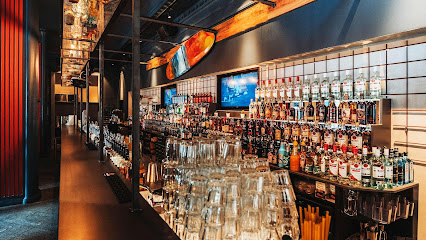
Brauhaus Ernst August
0.5 km
Experience the best of Hanover at Brauhaus Ernst August, a lively gastropub offering delicious food, local beers, and vibrant live music.
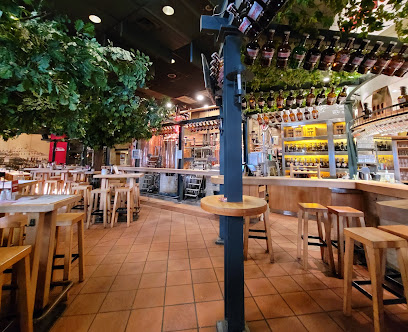
After 5 cocktail
0.6 km
Experience Hanover's nightlife at After 5 Cocktail, where unique cocktails and a vibrant atmosphere await you.
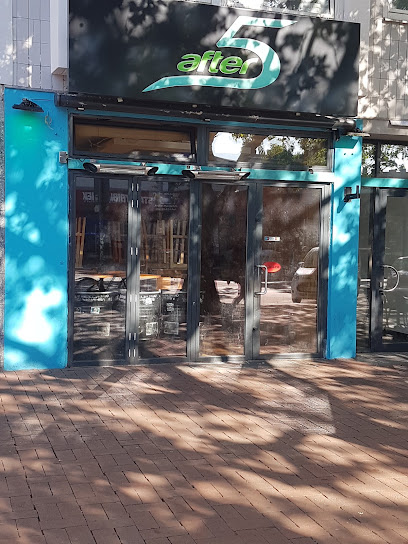
Schöne Aussichten 360° Beachclub Hannover
0.6 km
Discover the lively Schöne Aussichten 360° Beachclub in Hannover, where vibrant ambiance meets stunning views and refreshing drinks for a perfect getaway.
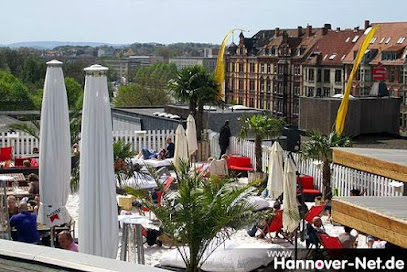
Shakespeare English Pub
0.6 km
Discover the vibrant atmosphere and authentic Irish experience at Shakespeare English Pub in Hanover, where great drinks and live music await.
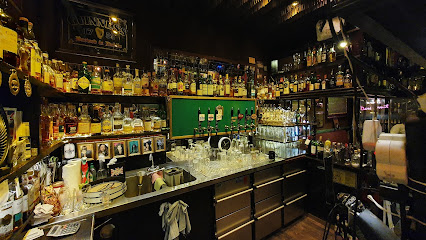
Alt Hanovera Irish Pub
0.6 km
Discover the authentic Irish pub experience at Alt Hanovera, where great food, drinks, and live music create memorable moments in Hannover.
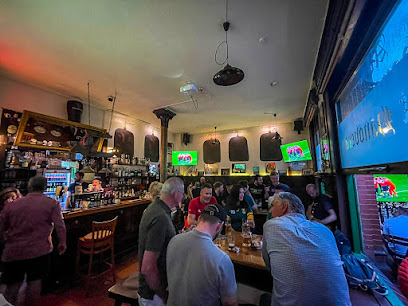
Dublin Inn
0.6 km
Experience the warmth of Irish hospitality at Dublin Inn, where traditional food, drinks, and sports come together in Hanover's lively atmosphere.
